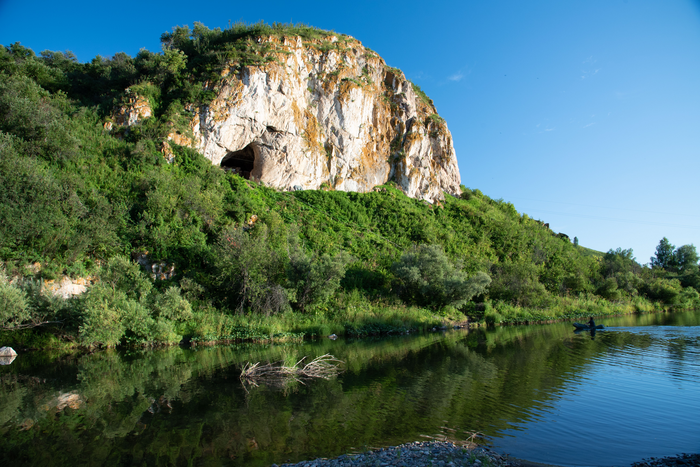The first Neandertal draft genome was published in 2010. Since then, researchers from the Max Planck Institute for Evolutionary Anthropology have sequenced a further 18 genomes from 14 different archaeological sites throughout Eurasia. While these genomes have provided insights into the broader strokes of Neandertal history, we still know little of individual Neandertal communities.

Credit: Bence Viola
The first Neandertal draft genome was published in 2010. Since then, researchers from the Max Planck Institute for Evolutionary Anthropology have sequenced a further 18 genomes from 14 different archaeological sites throughout Eurasia. While these genomes have provided insights into the broader strokes of Neandertal history, we still know little of individual Neandertal communities.
To explore the social structure of Neandertals, the researchers turned their attention to southern Siberia, a region that has previously been very fruitful for ancient DNA research – including the discovery of Denisovan hominin remains at the famous Denisova Cave. From work done at that site, we know that Neandertals and Denisovans were present in this region over hundreds of thousands of years, and that Neandertals and Denisovans have interacted with each other – as the finding of a child with a Denisovan father and a Neandertal mother has shown.
First Neandertal community
In their new study, the researchers focused on the Neandertal remains in Chagyrskaya and Okladnikov Caves, which are within 100 kilometers of Denisova Cave. Neandertals briefly occupied these sites around 54,000 years ago, and multiple potentially contemporaneous Neandertal remains had been recovered from their deposits. The researchers successfully retrieved DNA from 17 Neandertal remains – the largest number of Neandertal remains ever sequenced in a single study.
Chagyrskaya Cave has been excavated over the last 14 years by researchers from the Institute of Archaeology and Ethnography, Russian Academy of Sciences. Besides several hundred thousand stone tools and animal bones, they also recovered more than 80 bone and tooth fragments of Neandertals, one of the largest assemblages of these fossil humans not only in the region but also in the world.
The Neandertals at Chagyrskaya and Okladnikov hunted ibex, horses, bison and other animals that migrated through the river valleys that the caves overlook. They collected raw materials for their stone tools dozens of kilometers away, and the occurrence of the same raw material at both Chagyrskaya and Okladnikov Caves also supports the genetic data that the groups inhabiting these localities were closely linked.
Previous studies of a fossil toe from Denisova cave showed that Neandertals inhabited the Altai mountains considerably earlier as well, around 120,000 years ago. Genetic data shows though, that the Neandertals from Chagyrskaya and Okladnikov Caves are not descendants of these earlier groups, but are closer related to European Neandertals. This is also supported by the archaeological material: the stone tools from Chagyrskaya Cave are most similar to the so-called Micoquian culture known from Germany and Eastern Europe.
The 17 remains came from 13 Neandertal individuals – 7 men and 6 women, of which 8 were adults and 5 were children and young adolescents. In their mitochondrial DNA, the researchers found several so-called heteroplasmies that were shared between individuals. Heteroplasmies are a special kind of genetic variant that only persists for a small number of generations.
The easternmost Neandertals
Among these remains were those of a Neandertal father and his teenage daughter. The researchers also found a pair of second degree relatives: a young boy and an adult female, perhaps a cousin, aunt or grandmother. The combination of heteroplasmies and related individuals strongly suggests that the Neandertals in Chagyrskaya Cave must have lived – and died – at around the same time.
“The fact that they were living at the same time is very exciting. This means that they likely came from the same social community. So, for the first time, we can use genetics to study the social organization of a Neandertal community,” says Laurits Skov, who is first author on this study.
Another striking finding is the extremely low genetic diversity within this Neandertal community, consistent with a group size of 10 to 20 individuals. This is much lower than those recorded for any ancient or present-day human community, and is more similar to the group sizes of endangered species at the verge of extinction.
However, Neandertals didn’t live in completely isolated communities. By comparing the genetic diversity on the Y-chromosome, which is inherited father-to-son, with the mitochondrial DNA diversity, which is inherited from mothers, the researchers could answer the question: Was it the men or the women who moved between communities? They found that the mitochondrial genetic diversity was much higher than the Y chromosome diversity, which suggests that these Neandertal communities were primarily linked by female migration. Despite the proximity to Denisova Cave, these migrations do not appear to have involved Denisovans – the researchers found no evidence of Denisovan gene flow in the Chagyrskaya Neandertals in the last 20,000 years before these individuals lived.
“Our study provides a concrete picture of what a Neandertal community may have looked like”, says Benjamin Peter, the last author of the study. “It makes Neandertals seem much more human to me.”
Journal
Nature
DOI
10.1038/s41586-022-05283-y
Article Title
Genetic insights into the social organization of Neanderthals
Article Publication Date
19-Oct-2022




